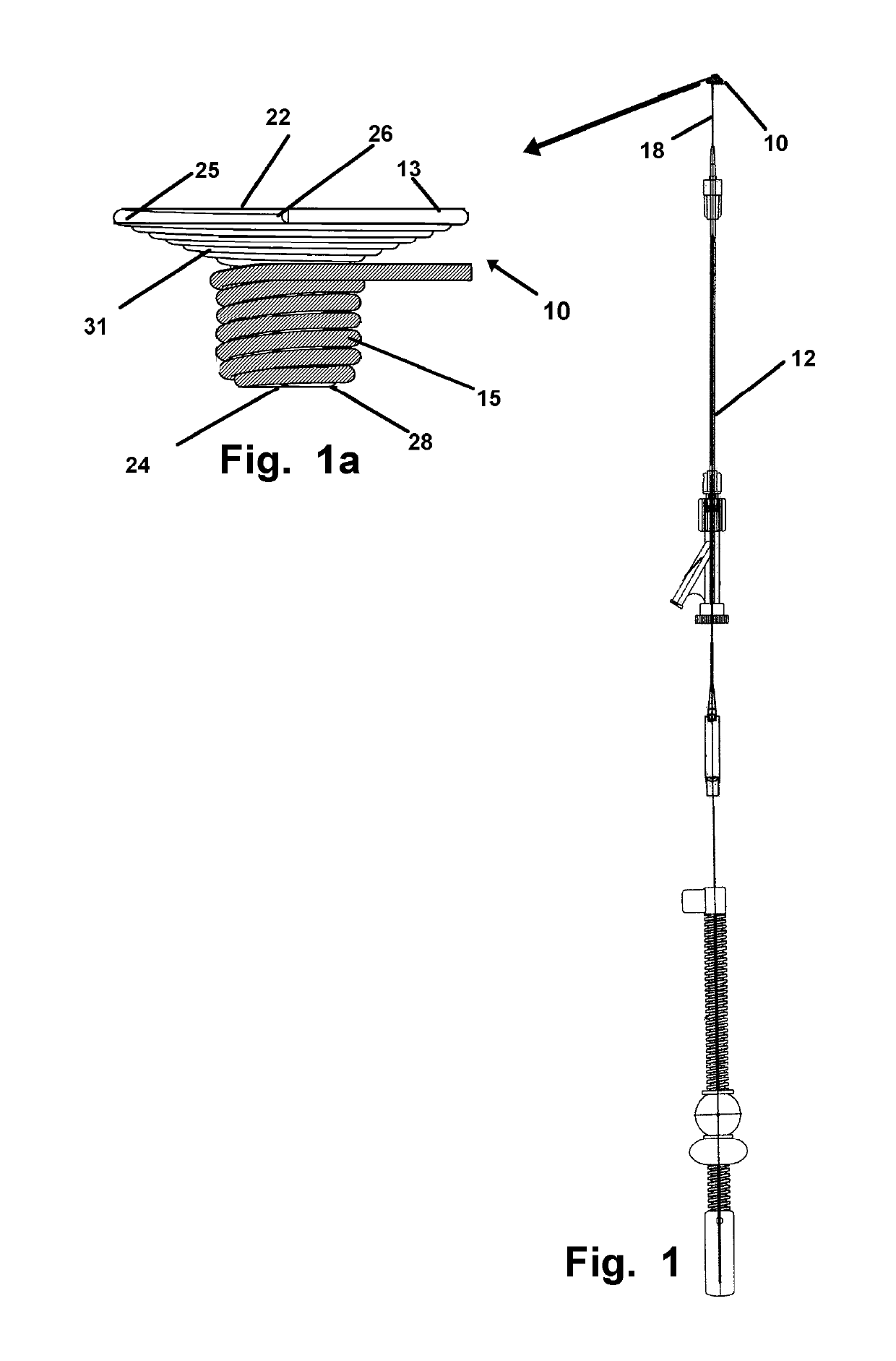Vascular occlusion device configured for infants
a technology for occlusion devices and infants, which is applied in the field of vascular occlusion devices, can solve the problems of inability to correct the problem of a minimally invasive transcatheter, non-invasive care, and more conventional surgery which is not well tolerated by adults, let alone children, and achieves a high degree of control and confidence. , the effect of high degree of implant control
- Summary
- Abstract
- Description
- Claims
- Application Information
AI Technical Summary
Benefits of technology
Problems solved by technology
Method used
Image
Examples
Embodiment Construction
[0042]In this description, the directional prepositions of up, upwardly, down, downwardly, front, back, top, upper, bottom, lower, left, right and other such terms refer to the device as it is oriented and appears in the drawings and are used for convenience only; they are not intended to be limiting or to imply that the device has to be used or positioned in any particular orientation.
[0043]Now referring to drawings in FIGS. 1-15, wherein similar components are identified by like reference numerals, there is seen in FIG. 1, a view of the microcatheter 12 having an axial passage through which the implant device 10 herein is sized for passage, in an elongated state to an implant site. At the implant site, the device 10 will achieve a deployed configuration as in FIG. 2, 7, or 11 or other deployed configuration where a first portion 13 of the implant device 10, deploys on a first side of an aperture or opening or other vascular or arterial area to be blocked, and a second portion 15 o...
PUM
 Login to View More
Login to View More Abstract
Description
Claims
Application Information
 Login to View More
Login to View More - R&D
- Intellectual Property
- Life Sciences
- Materials
- Tech Scout
- Unparalleled Data Quality
- Higher Quality Content
- 60% Fewer Hallucinations
Browse by: Latest US Patents, China's latest patents, Technical Efficacy Thesaurus, Application Domain, Technology Topic, Popular Technical Reports.
© 2025 PatSnap. All rights reserved.Legal|Privacy policy|Modern Slavery Act Transparency Statement|Sitemap|About US| Contact US: help@patsnap.com



